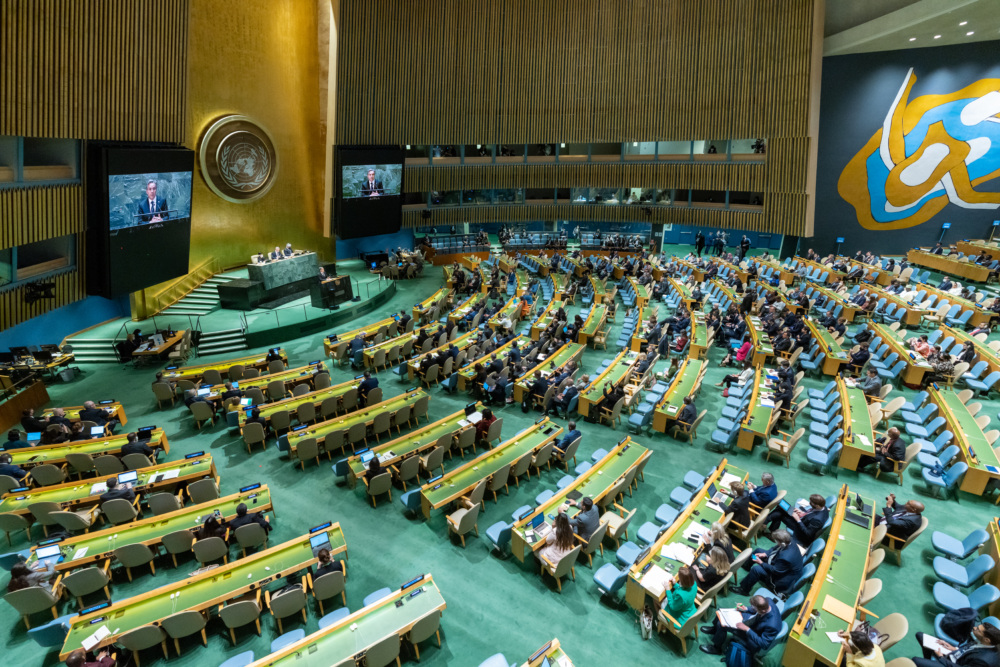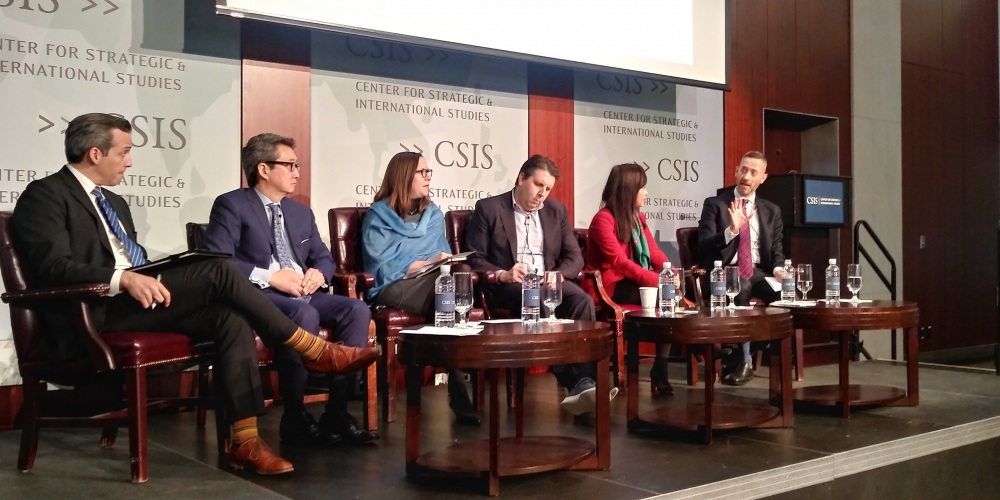This post was written by Jessica
Rogers, an intern with NTI’s Global Nuclear Policy Program. Rogers is
a graduate student in the Security Studies Program at Georgetown University’s
School of Foreign Service.
NTI’s Senior Director for Fuel Cycle and Verification Richard
Johnson on Friday joined an expert panel hosted by the Center for Strategic
and International Studies (CSIS) to discuss prospects for this week’s summit in
Hanoi between President Trump and North Korean leader Kim Jong Un. Johnson and
his fellow panelists—former US Ambassador to the Republic of Korea, Alliance
for Securing Democracy’s Laura Rosenberger, CSIS’s Victor Cha, and CSIS’s Sue
Mi Terry—discussed the possibility of a “denuclearization” deal with North
Korea and agreed that the United States would need to see more substantive
outcomes in Hanoi than from the 2018 Singapore summit when the two sides issued
no more than an aspirational statement.
Can we expect more progress from the Vietnam
Summit this week?
For Johnson, one sign of a successful Vietnam Summit would be
the launch of a more regular and sustained working-level negotiation process
going forward. The other panelists agreed that process and coordination, both
within the U.S. government and with other states, are prerequisites if there is
to be real progress in reducing the North Korean threat. The complexity of
North Korea’s nuclear weapons program requires a detailed, step-by-step process
starting with working-level talks to address all connected issues.
Johnson explained that these working-level talks should also
include technical experts and get into specifics. “If you look at all of the
previous North Korea cases, a lot of them fell apart because of
misunderstandings about what the words actually meant,” he said, adding that “while
ambiguity can be great and a diplomat’s best friend … when you’re talking
about technical issues, you want specificity.”
Laura Rosenberger said she would look to see if the summit
resulted in a detailed joint statement negotiated, agreed upon, and carried out
by the U.S. and North Korean leaders, though she expressed skepticism that this
was achievable, noting the Singapore statement was supposed to be followed
promptly by additional diplomatic engagement that never materialized.
What could next steps look like?
For Johnson, the essential next step is for North Korea to
freeze its fissile material production in a verifiable way, preferably through
the involvement of the International Atomic Energy Agency (IAEA).
Johnson said he would like to see a declaration from North Korea
about its nuclear program early in the negotiation process, but it could be
done in stages, starting with an initial declaration of its nuclear material
production. Rosenberger agreed that a declaration was not essential as the
first step, but she had concerns about getting too far down the road without
some better understanding of North Korea’s programs. At the same time, they agreed with Victor
Cha’s warning that the United States should not give up too much in exchange
for an incomplete declaration.
The panelists voiced another common concern: That the North
Koreans are trying to trade things used as bargaining chips in previous
negotiations, such as the Yongbyon nuclear facility. For a successful deal and
to avoid previous mistakes, North Korean actions should be met with limited,
proportionate steps by the United States, especially given Pyongyang’s history
of reversing past denuclearization measures.
Finally, what could a deal with North Korea look
like?
On the North Korean side, Sue Mi Terry said she could imagine a
continued halt to nuclear and missile testing, a limit on existing stockpiles,
and a shutdown of the Yongbyon reactor—the heart of North Korea’s nuclear
program and its only source of weapons-grade plutonium. On the U.S. side, she
sees the possibility of easing sanctions, opening a liaison office, and
granting a declaration on the end of the Korean War. Terry warned, however,
that Americans view an “end of war declaration” as something more symbolic,
while the North Koreans could interpret it as a promise to pull out U.S. troops
from South Korea.
Johnson emphasized that for any agreement to be successful,
verification is key. He recommends that the U.S. address its verification
demands early in the negotiation process. The U.S. needs to clarify that it
expects North Korea eventually to sign on to the IAEA Comprehensive Safeguards
Agreement and Additional Protocol to verify any final agreement. By setting
these expectations now, North Korea is less likely to claim that the United
States is “moving the goalposts” and derail what will already be a long and
strenuous negotiation process.




